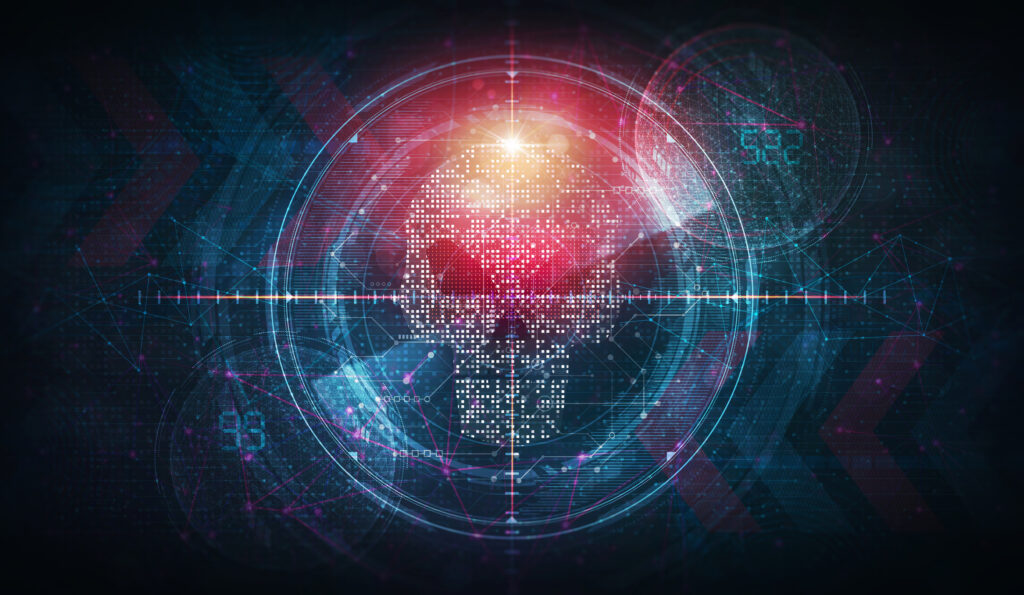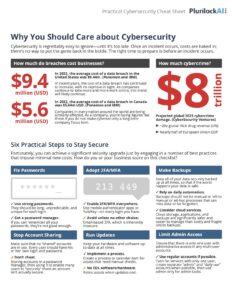In the ever-evolving landscape of cybersecurity, the protection of identities has become paramount. Identity Threat Detection and Response (ITDR) has emerged as a critical component in safeguarding digital identities against malicious activities. This deep dive aims to explore ITDR comprehensively, covering its definition, significance, underlying technologies, challenges, and future prospects.
What is Identity Threat Detection and Response (ITDR)?
Identity Threat Detection and Response (ITDR) refer to a set of processes, technologies, and strategies aimed at detecting and mitigating threats targeting digital identities within an organization’s network infrastructure. It involves continuous monitoring, analysis, and response to suspicious activities associated with user identities, credentials, and access privileges.
ITDR encompasses various techniques such as anomaly detection, behavior analysis, privilege management, and threat intelligence integration to identify potential identity-related threats. By leveraging advanced algorithms and machine learning models, ITDR solutions can distinguish between normal and abnormal user behavior, enabling organizations to respond promptly to security incidents and prevent unauthorized access to sensitive resources.
Why Does ITDR Matter?
1. Protection Against Insider Threats
Insider threats pose a significant risk to organizations, as trusted insiders with legitimate access can exploit their privileges for malicious purposes. ITDR plays a crucial role in detecting anomalous behaviors indicative of insider threats, such as unauthorized access attempts, data exfiltration, and privilege abuse. By continuously monitoring user activities and analyzing behavioral patterns, ITDR solutions can identify suspicious actions and prevent potential data breaches before they escalate.
2. Mitigation of Credential-based Attacks
Credential-based attacks, including phishing, brute force attacks, and credential stuffing, remain a prevalent threat vector for cybercriminals. ITDR helps mitigate these threats by monitoring user authentication attempts and detecting anomalies that may indicate compromised credentials or unauthorized access attempts. By implementing multi-factor authentication, adaptive access controls, and real-time monitoring, organizations can enhance their resilience against credential-based attacks and safeguard sensitive data.
3. Compliance and Regulatory Requirements
With the increasing emphasis on data privacy and regulatory compliance, organizations are required to implement robust security measures to protect user identities and sensitive information. ITDR solutions assist organizations in meeting compliance requirements by providing comprehensive visibility into user activities, access privileges, and security incidents. By demonstrating proactive efforts in identity threat detection and response, organizations can ensure compliance with regulations such as GDPR, HIPAA, and PCI DSS, thus avoiding costly penalties and reputational damage.
4. Preserving Business Continuity
Cyberattacks targeting user identities can disrupt business operations, compromise critical systems, and result in financial losses. ITDR plays a vital role in preserving business continuity by detecting and mitigating identity-related threats in real-time. By proactively identifying suspicious activities and implementing rapid incident response measures, organizations can minimize the impact of cyber incidents and maintain uninterrupted business operations.
5. Strengthening Overall Security Posture
Effective ITDR enhances an organization’s overall security posture by providing visibility, control, and resilience against evolving cyber threats. By integrating ITDR solutions with existing security infrastructure such as SIEM (Security Information and Event Management) systems, endpoint protection platforms, and identity governance solutions, organizations can establish a layered defense mechanism that spans across the entire network environment. This proactive approach to identity threat detection and response enables organizations to identify vulnerabilities, mitigate risks, and adapt to emerging threats effectively.
In-Depth Analysis of ITDR Importance
1. Contextual Understanding of User Behavior
ITDR solutions leverage contextual information such as user role, location, device type, and historical behavior to establish baseline profiles and detect deviations indicative of potential threats. By analyzing user behavior in context, ITDR solutions can differentiate between legitimate activities and suspicious actions, thus reducing false positives and enhancing the accuracy of threat detection.
2. Real-Time Threat Detection and Response
Traditional security measures often rely on rule-based detection methods, which may fail to detect sophisticated and evolving threats in real-time. ITDR solutions employ advanced analytics, machine learning, and threat intelligence to detect anomalous behaviors and security incidents as they occur. By providing real-time alerts and automated response capabilities, ITDR enables organizations to respond promptly to security threats and prevent data breaches before they cause significant damage.
3. Continuous Monitoring and Adaptation
Cyber threats are constantly evolving, requiring organizations to maintain continuous vigilance and adapt their security strategies accordingly. ITDR solutions offer continuous monitoring capabilities, allowing organizations to detect emerging threats and adjust their security posture in real-time. By analyzing trends, patterns, and anomalies in user behavior, ITDR solutions can identify new attack vectors and proactively mitigate risks before they are exploited by malicious actors.
4. Integration with Identity Governance and Access Management
ITDR solutions complement existing identity governance and access management (IGAM) frameworks by providing enhanced visibility and control over user activities and access privileges. By integrating ITDR with IGAM solutions, organizations can enforce least privilege principles, streamline access provisioning processes, and detect unauthorized access attempts in real-time. This integration enables organizations to achieve a comprehensive approach to identity and access management, reducing the risk of insider threats and unauthorized access.
5. Scalability and Flexibility
As organizations grow and evolve, their security requirements also change, necessitating scalable and flexible ITDR solutions. Cloud-based ITDR platforms offer scalability and flexibility, allowing organizations to adapt to changing security needs and scale their infrastructure according to demand. By leveraging cloud-based ITDR solutions, organizations can benefit from elastic computing resources, real-time updates, and seamless integration with existing cloud environments, thus enhancing their ability to detect and respond to identity-related threats effectively.
Challenges and Future Trends
While ITDR offers significant benefits in mitigating identity-related threats, several challenges and future trends warrant consideration:
1. Evolving Threat Landscape
The threat landscape is continuously evolving, with cybercriminals adopting new tactics, techniques, and procedures to bypass traditional security measures. ITDR solutions must keep pace with these evolving threats by incorporating advanced analytics, threat intelligence, and machine learning algorithms to detect and respond to emerging threats effectively.
2. Privacy and Data Protection
As ITDR solutions collect and analyze vast amounts of user data, privacy and data protection concerns arise. Organizations must ensure compliance with data privacy regulations and implement robust security measures to safeguard sensitive information from unauthorized access or misuse. Adopting privacy-enhancing technologies such as differential privacy and encryption can help mitigate privacy risks associated with ITDR deployments.
3. Insider Threat Detection
Detecting insider threats remains a significant challenge for organizations, as malicious insiders may possess legitimate credentials and access privileges. ITDR solutions must employ advanced behavioral analytics and anomaly detection techniques to identify suspicious activities indicative of insider threats. Additionally, organizations should implement stringent access controls, user monitoring, and privileged access management to mitigate the risk of insider attacks effectively.
4. Integration and Interoperability
Integration with existing security infrastructure and interoperability with third-party solutions pose challenges for ITDR deployments. Organizations must ensure seamless integration between ITDR platforms and other security tools such as SIEM systems, endpoint protection platforms, and identity governance solutions to achieve comprehensive threat detection and response capabilities. Standardization efforts and open APIs can facilitate interoperability between disparate security solutions, enabling organizations to build a cohesive security ecosystem.
5. Automation and Orchestration
The automation of threat detection and response processes is essential for improving efficiency and reducing response times. ITDR solutions should incorporate automation and orchestration capabilities to streamline incident response workflows, automate repetitive tasks, and orchestrate remediation actions across the network. By embracing automation, organizations can enhance their ability to respond rapidly to security incidents and minimize the impact of cyber threats.
Conclusion
Identity Threat Detection and Response (ITDR) has emerged as a critical component in safeguarding digital identities against evolving cyber threats. By providing continuous monitoring, real-time threat detection, and adaptive response capabilities, ITDR enhances organizations’ ability to protect against insider threats, mitigate credential-based attacks, and comply with regulatory requirements. The contextual understanding of user behavior, integration with identity governance, scalability, and flexibility further contribute to the importance of ITDR in strengthening overall security postures.
However, challenges such as the evolving threat landscape, privacy concerns, insider threat detection, integration, and automation must be addressed to maximize the effectiveness of ITDR solutions. As organizations continue to invest in cybersecurity measures, ITDR will play a pivotal role in mitigating identity-related risks, preserving business continuity, and adapting to the dynamic nature of the digital landscape.






